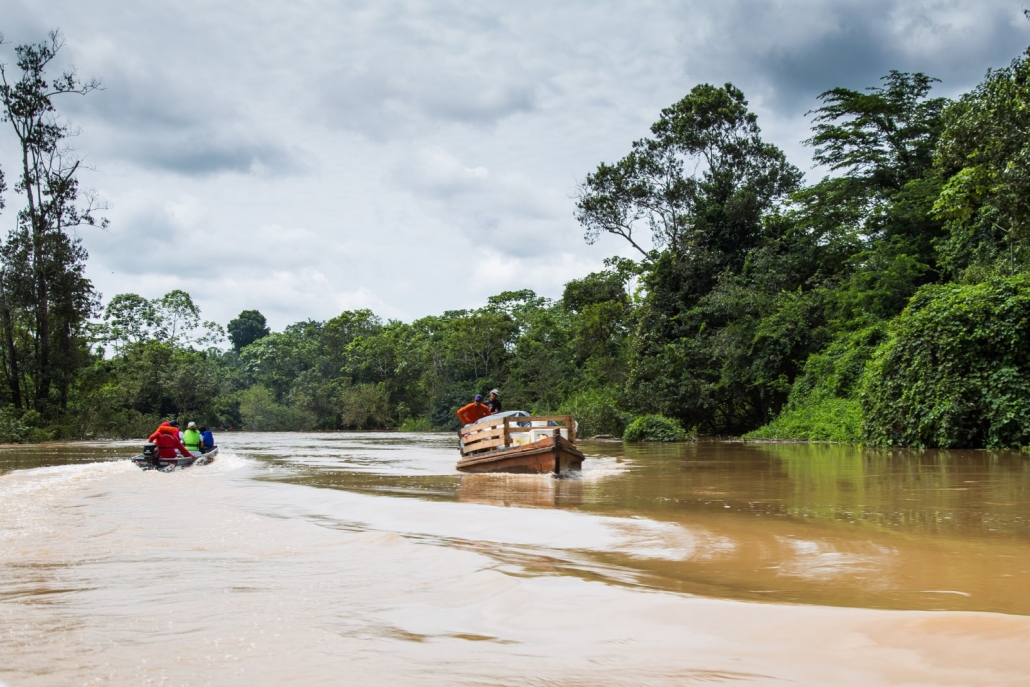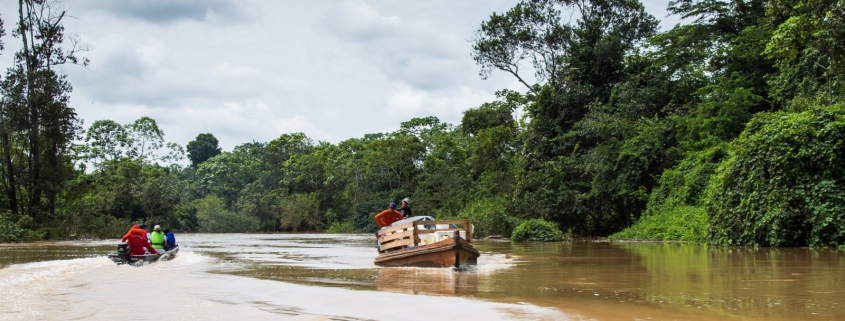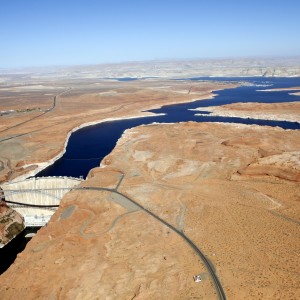HotSpots H2O: Indigenous Communities, Biodiversity Along Brazil-Peru Border Threatened by Highway Construction

Rio Acre © Arison Jardim/Secom
Christian Thorsberg, Circle of Blue
Canopied by rubber trees and sprawling vines with apple-sized nuts, Acre state in northwest Brazil frames earth’s portrait of natural beauty. To the north and west, montane forests sweep atop the Andes, the mountain home of thousands of endemic animal species, not least endangered tapirs and giant armadillos. Eastward, across gnarled rivers and historic indigenous homelands, the great Amazon Rainforest paints this basin shades of green, refreshing much of the world’s oxygen.
And lurching too across Acre state, a highway heaves its concrete girth.
BR-364, the 2,700-mile asphalt strip that weaves through rainforest to connect São Paulo to Acre, might soon be lengthened. A proposal to extend the road 94 miles through this Andes-Amazon “transition zone,” to reach the Peruvian border, is gaining political momentum.
The proposed addition, which would require tree-felling along its entire length, is slated to cut through Serra do Divisor National Park–a haven of Brazilian biodiversity–as well as the territories of the Payanawa, Nukini, Kapanawa, and a half-dozen other tribes. Its construction also threatens the health of diverse Amazonian rivers–white, black, and clear-watered alike–that support essential transport, food and water sources, and cultural beauty. The Acre, Moa, Juruá, and Japiim rivers, which succumbed earlier this year to increased flooding linked to climate change and extreme rain events, are keystone socio-environmental features.
“This road threatens 100 percent of our land, it destroys our sacred site,” Joel Puyanawa, a chief whose home will be directly impacted by the highway, told Mongabay. “If the road is built, it exterminates the history of our people.”
The government’s bid to move ahead with the project coincides with the release of an alarming study, published in the journal Nature, that shows certain regions of the Amazon emitting more carbon dioxide than they absorb. The expansion of BR-364 would contribute to the surging rate of Amazon deforestation, which nears its highest point in over a decade.
Politicians in favor of the highway have argued that the project is not only a transoceanic gambit–meaning a more direct route through northwestern Brazil to Peru and its Pacific coast. They say it will also better connect Acre’s remote villages to the rest of the country. But most indigenous leaders are decrying the assumption that they desire such interconnectedness, especially at the cost of their sacred forests. The project’s developers, they say, neglected their legal responsibility to consult the river communities about the highway.
In an effort to circumvent Serra do Divisor’s current safeguards, Brazilian President Jair Bolsonaro and his allies are seeking to demote its national park status to an “environmental protection area,” a misnomer workaround that would green-light deforestation, mining, and animal grazing, imperiling water overconsumption and river pollution.
“They say it will bring development but, as always, it will be development for half a dozen people,” Miguel Scarcello, the head of environmental group SOS Amazônia, told the Guardian. “It’s such an old-fashioned, backwards vision … that pays absolutely no attention to conservation. It will cut through an untouched area of forest and affect the headwaters of really important tributaries of the Juruá River.”
Christian Thorsberg is an environmental writer from Chicago. He is passionate about climate and cultural phenomena that often appear slow or invisible, and he examines these themes in his journalism, poetry, and fiction.






Leave a Reply
Want to join the discussion?Feel free to contribute!